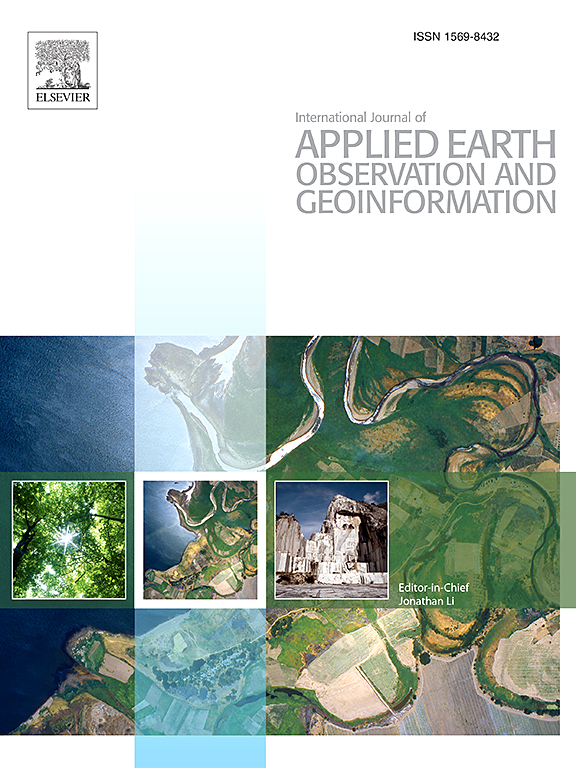面向遥感语义分割的加速扩散模型
IF 7.6
Q1 REMOTE SENSING
International journal of applied earth observation and geoinformation : ITC journal
Pub Date : 2025-06-18
DOI:10.1016/j.jag.2025.104636
引用次数: 0
摘要
消噪扩散概率模型(ddpm)在各种生成建模任务中表现出了非凡的潜力。尽管语义分割有明显的前景,但它们在遥感中的应用仍然有限,主要是由于计算要求的推理。虽然在遥感中使用ddpm的初始方法与最先进的模型相比具有竞争力的精度,但其图像生成过程的多步骤性质构成了主要瓶颈。为了解决这一限制,本文研究了加速推理的三个关键策略:(1)优化训练和推理步骤;(2)应用适合分割任务的DDPM加速技术(包括去噪扩散隐式模型、改进的去噪扩散模型和递进蒸馏);(3)深入分析使用测试时间增强时精度提高和额外推理时间之间的权衡。这些策略在两个已建立的以建筑物和道路为重点的遥感语义分割数据集上进行了广泛的测试。最后,我们将优化的基于扩散的模型与最先进的基于卷积的模型在准确性和推理时间方面进行了比较,表明两种方法之间的差距越来越小,并且基于扩散的分割在实际应用中的可行性越来越高。本文章由计算机程序翻译,如有差异,请以英文原文为准。
Speeding-up diffusion models for remote sensing semantic segmentation
Denoising Diffusion Probabilistic Models (DDPMs) have demonstrated exceptional potential across various generative modeling tasks. Despite evident promise in semantic segmentation, their adoption for remote sensing remains limited primarily due to computationally demanding inference. While initial approaches using DDPMs in remote sensing achieve competitive accuracy with state-of-the-art models, the multi-step nature of their image generation process poses a major bottleneck. To address this limitation, this paper investigates three key strategies for accelerating inference: (1) optimizing training and inference steps, (2) applying DDPM acceleration techniques adapted to segmentation task (including Denoising Diffusion Implicit Models, Improved Denoising Diffusion Models, and Progressive Distillation), and (3) thoroughly analyzing the trade-off between accuracy improvement and additional inference time when using test-time augmentation. These strategies are extensively tested with two established remote sensing semantic segmentation datasets focused on buildings and roads. Finally, we compare the optimized diffusion-based model with state-of-the-art convolutional-based models in terms of accuracy and inference times, showing the narrowing gap between both approaches and the increasing viability of diffusion-based segmentation for practical applications.
求助全文
通过发布文献求助,成功后即可免费获取论文全文。
去求助
来源期刊

International journal of applied earth observation and geoinformation : ITC journal
Global and Planetary Change, Management, Monitoring, Policy and Law, Earth-Surface Processes, Computers in Earth Sciences
CiteScore
12.00
自引率
0.00%
发文量
0
审稿时长
77 days
期刊介绍:
The International Journal of Applied Earth Observation and Geoinformation publishes original papers that utilize earth observation data for natural resource and environmental inventory and management. These data primarily originate from remote sensing platforms, including satellites and aircraft, supplemented by surface and subsurface measurements. Addressing natural resources such as forests, agricultural land, soils, and water, as well as environmental concerns like biodiversity, land degradation, and hazards, the journal explores conceptual and data-driven approaches. It covers geoinformation themes like capturing, databasing, visualization, interpretation, data quality, and spatial uncertainty.
 求助内容:
求助内容: 应助结果提醒方式:
应助结果提醒方式:


